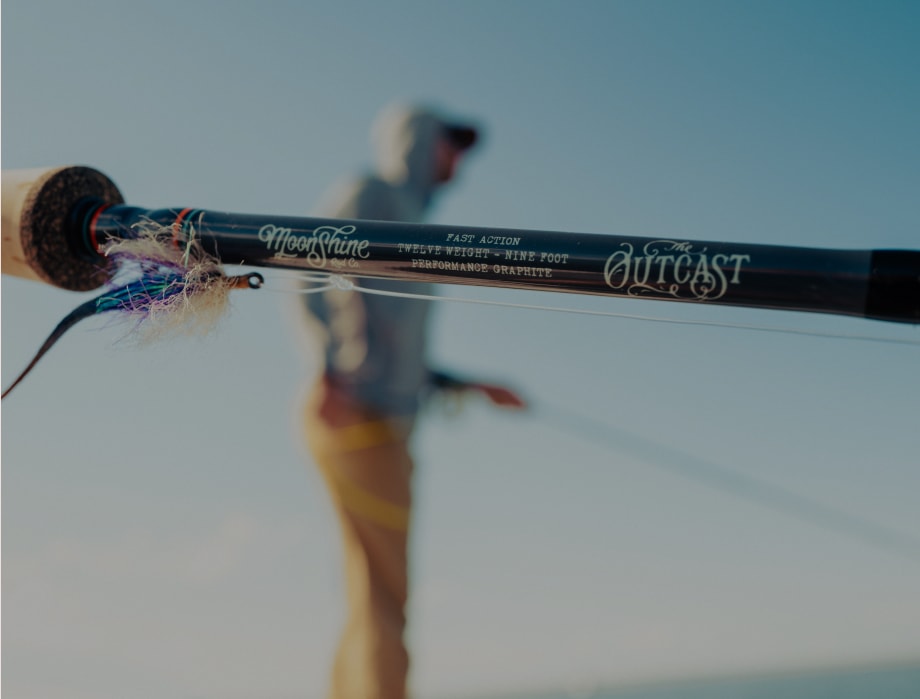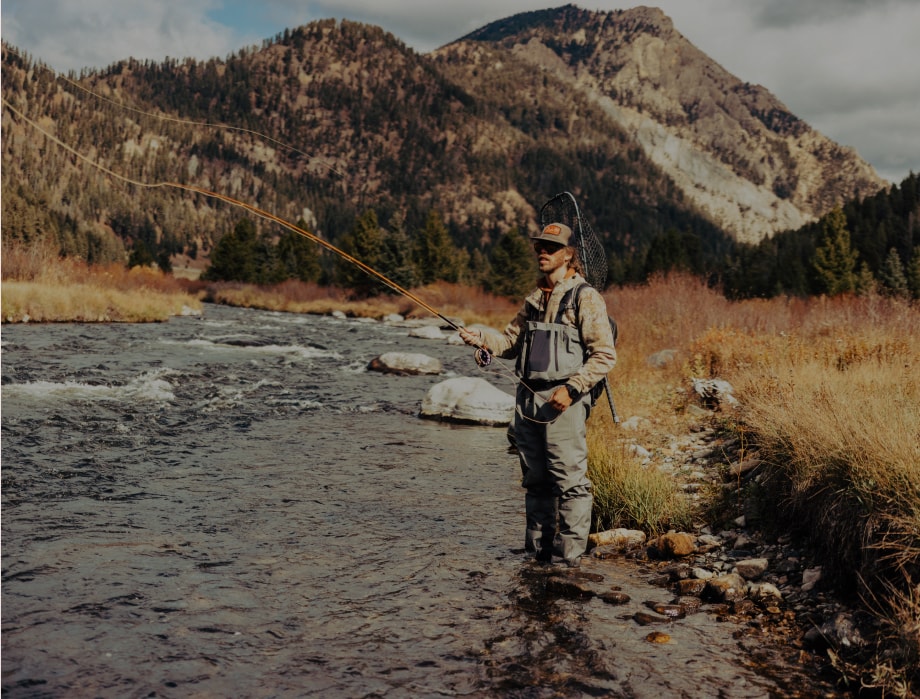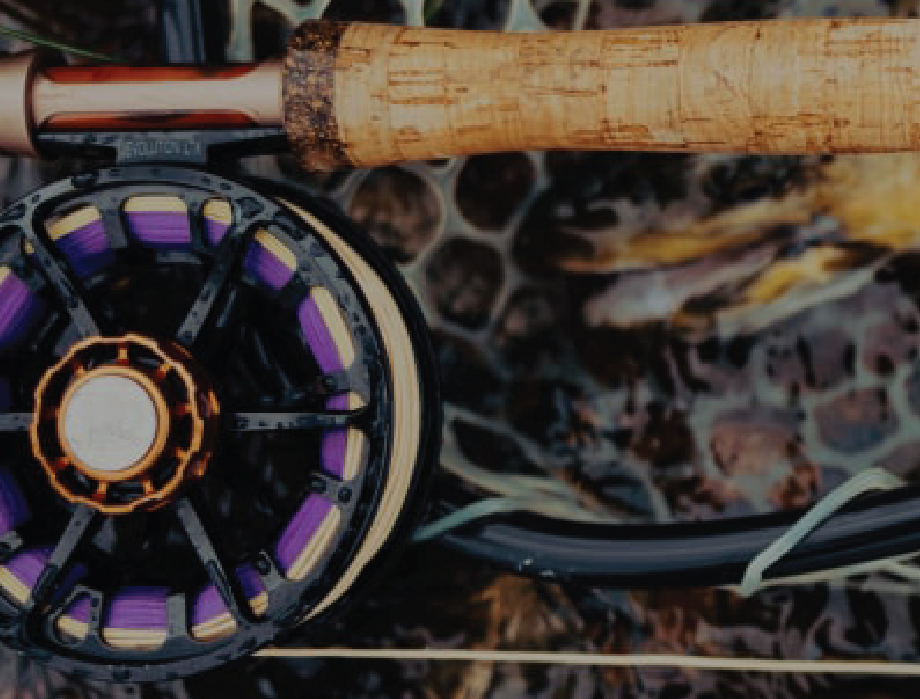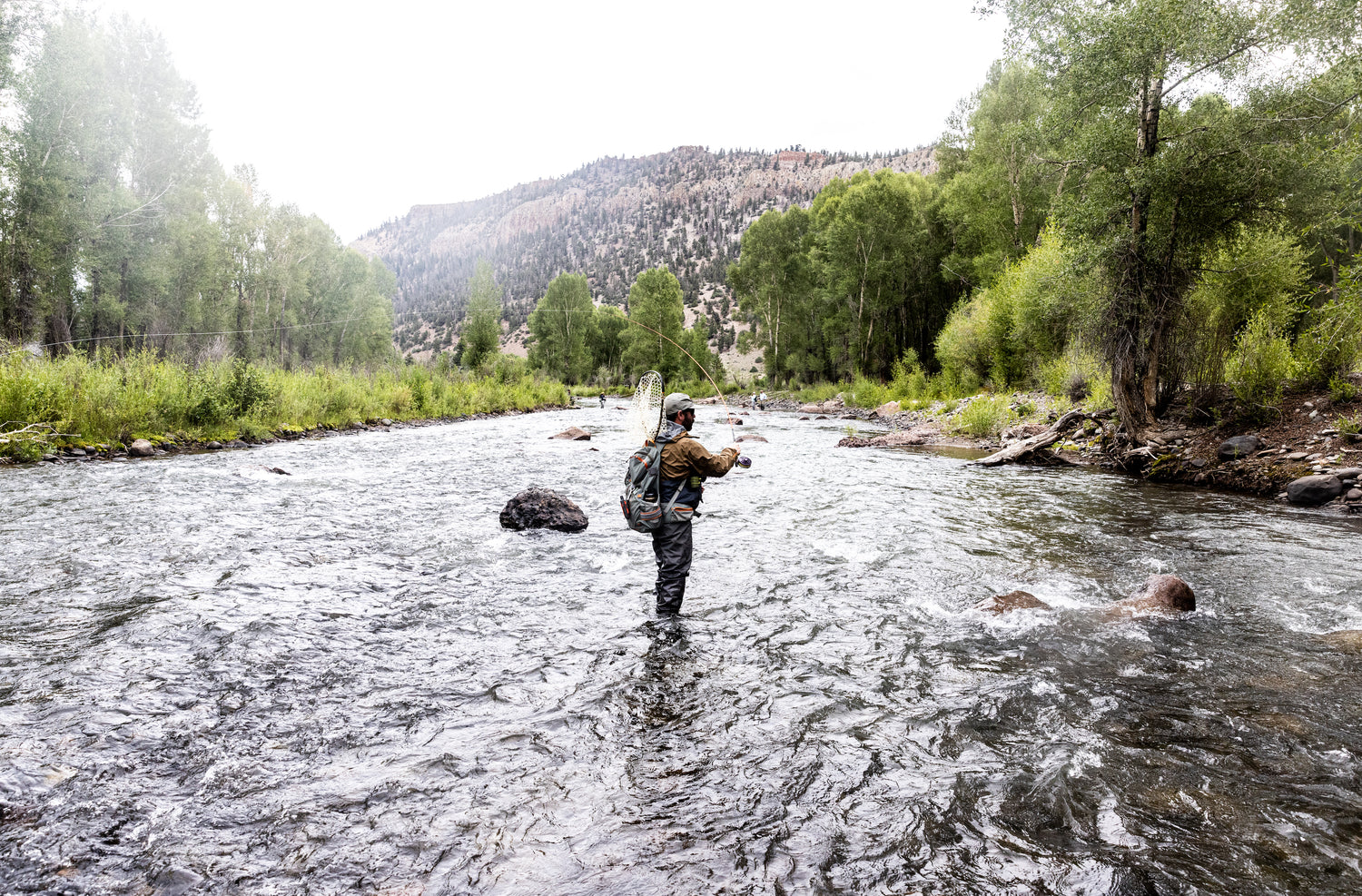
Kurt Vonnegut once said, “In this world, you get what you pay for.” And, particularly in fly fishing, we happen to agree with him. There is absolutely no doubt that fly rod companies, Moonshine included, are doing some incredible things with fly rod technology these days, incorporating space-age technology into their products that blow some past models out of the water.
And, when you look at the price tags out there, you’d better be getting what you pay for. We did a quick little survey of flagship rods across the industry, and the average price for high-end rods falls somewhere in the range of $1,058 for a fishing rod. For those of you who picked up your first car in high school for around that much, it may be hard to believe, but we can all admit that it’s a pretty good chunk of change.
So, the real question is, “Are expensive fly rods really worth the cost?” That’s what we’re exploring today, and you may be a little surprised by the answers we come up with.
Now, you may be thinking that we’re biased because, well, we are absolutely biased. You can’t start a fly-rod company like ours and not have some well-established opinions on the cost of fly rods these days, and why they cost so much. Regardless, just know that it isn’t our goal to toot our own horn in this article. We’re a part of the fly-fishing industry too and carry a rod that clocks in at $579, which definitely isn’t nothing, so you can keep us in consideration when reading this breakdown.
But, let’s take a good hard look at what you’re actually paying for, what you actually need, and how those two factors intersect.
Marketing Technology, Technology Marketing
It’s easy to be cynical about consumerism, pegging it as a shallow and meaningless exercise, but we don’t think that’s really the case. Particularly in fly fishing, much of our buying habits are driven by the fact that we’re hopelessly obsessed with our sport and buying new gear is simply one of many ways to scratch that itch until we get on the water again. Most anglers would freely admit they don’t need that fourth or fifth or seventeenth fly rod, but they’re picking them up anyways. Guilty as charged.
But, what we think is a dangerous game is when ‘marketing technology’ turns into ‘technology marketing.’ What we mean is that it’s one thing to promote your latest technology and it’s a whole other thing to invent a technological term purely for the sake of marketing. So, what’s the difference? Well, our Vesper series utilizes ‘high-modulus’ graphite, which is a real-world thing that essentially means “stronger and lighter,” which we all know translates to a better cast.
But, so many fly-fishing companies are guilty of slapping on a meaningless term for the sake of marketing dollars. We’re not in the business of calling out other fly-rod companies so, instead, we’ll call out Miller Lite. Remember their “vortex” bottle that helped spiral beer through the neck straight down your throat. Yeah, a lot of fly rod companies have their own version of the “vortex” bottle, some sort of gimmick that does absolutely nothing for your fly fishing experience, but does a lot for the price tag.
So, when you’re looking into your high-end fly rod, look at the terms they’re throwing at you and do a little research. Better yet, have their customer service team explain what those terms mean. Sure, it may be the best thing since sliced bread—or it could all be smoke and mirrors.
Ready for Liftoff
As we continue to attempt to answer the question, “Are expensive fly rods worth the cost,” we have to talk about rod action. Starting around the 1990s, the fly-fishing industry entered an arms race to see who could produce the “fastest” rod. We wrote an article on rod action but, in short, “faster” rods generally mean stiffer, which means they can hurl lines farther than and more quickly than their “slower” counterparts.
And, if you look across the industry, the highest price points (outside of bamboo) tend to be associated with the fastest rods. That’s for a reason. It takes expensive materials and tons of research to make ultra-fast rods and, ultimately, that translates into a higher price tag. It’s not a gimmick. It’s difficult and expensive to develop these tools, which means they need to be sold at a higher price point—even our own flagship rod, the Midnight Special, is a fast-action rod.
But, just because it’s more expensive and faster, does not mean it’s better. In fact, we think that most anglers don’t actually need a fast-action rod, particularly when it comes to freshwater fishing. In an article with MeatEater, fly-angler JT Van Zandt offered his opinion:
“I believe the trend to be faster and lighter was built around a macho concept of throwing a lot of line, which is not realistic or practical in many fishing environments,” Van Zandt said.
And, JT’s primarily a saltwater guide, which says a lot. If you think about your catches, think about how many of them came at the end of a 100-foot cast. We’ll go ahead and answer for you—not many. If we’re all being honest, most fish are caught within 40 to 50 feet, and just about any rod can cast that far with no problem at all, medium- and slow-action rods included.
And, generally, the faster your rod is, the less delicacy and feel it has, which becomes even more important as the casts get closer. So, as you browse through lineups of rods, just remember that in most cases speed and price are directly related, and speed may not be exactly what you need.
Idling Race Cars
We’ve used this quote at least once before, but it’s worth repeating because it comes from Lefty Kreh: “Most fishermen use the double haul to throw their casting mistakes further.” It’s a great point, and something every angler has been guilty of at some point. Particularly with fast and expensive rods, you can get away with throwing a long cast because they’re actually pretty easy to use, which is nice, but also a crutch if we’re being honest with ourselves.
As we pointed out earlier, the highest-end fly rods are incredible fishing machines. There’s no doubt about that. But, take a good, hard look in the mirror and ask yourself if you’re ready for a machine like that. Really, a $1,000+ fly rod is a Formula 1 car and most people don’t know how to drive a Formula 1 car in the way it should be driven and it may not even be the right kind of car for the job. If you needed to drive down a muddy trail, would you pick a race car?
Unless you’re a fly-fishing guide targeting tarpon day-in and day-out, you’re not getting the most out of a super fast-action, ultralight fly rod. You’re just not. But, for some reason, we’ve been told that we’re not legitimate fly anglers unless we’re casting something that costs four figures.
Now, we’re not admitting that our own rods are any lesser than those four-figure rods. Through years of design and some smart business decisions, we’ve been able to offer high-end fly rods at a mid-range price and we’re proud of it. But, even as you look into our own roster of fly rods, just know that some anglers fish for years before they’re able to cast the high-end rods effectively and, even then, they may not be exactly what they need. For example, you could fish our Revival series and our Drifter series for your entire life and catch just as many fish as someone who solely fishes our Vesper series. It’s about style and needs, not about quality, but unfortunately the price tag has gotten wrapped into the mix.
A Question of Value
Before we step off of our soapbox, we want to offer up a simple exercise: “What do you value?” There’s an interesting social experiment that’s popped up from time to time comparing Beats by Dre Pro headphones to Audio Technica ATH-M50 headphones (bear with us, we’re going somewhere with this). The former costs $400 and the latter costs around $160. But, here’s the kicker, nearly everyone who knows about sound quality admits that the Audio Technica headphones actually sound better than headphones that cost more than twice as much.
So, why are Beats headphones so popular? It’s all about value. When it comes to where their money goes, Beats puts money into marketing and design because to them looking cool is more important than technical output. It’s an accessory more than a tool. Audio Technica, well, is the opposite. And this isn’t a knock on Beats headphones; it’s just a matter of what matters to you.
As you shop for a fly rod, are you more interested in performance or how you look to other anglers? They both offer some sort of value. If you’re a guide or a prominent figure in the industry, it’s a fact of life that perception matters and people associate high-end fly rods with experience and skill. But, if you’re someone who fishes because they love to fish, you have the freedom to make decisions outside of perception.
Regardless, you may end up with a rod that costs $579 (or $1,095, though we’d argue they perform the same) or you may end up with a rod that costs $199. Either way, we’d urge you to make that decision for yourself. Go ahead, shoot our customer service team a message and ask them why you should spend $579 on our Midnight Special. They may actually tell you that our $249 Revival rod is a better option. Remember, you get what you pay for, but it’s far more important to know what you need.










5 comments
Warren Carah
I am a member of a mid-western fly fishing club. Our ranks are currently over-filled with senior citizens and we are making efforts to recruit younger members to insure our club’s future. One of the attitudes we encounter is the perception by many that fly fishing is a very expensive sport akin to golf and skiing. Part of this perception problem is the result of large amounts of marketing monies that are spent by many fly rod, reel and accessory companies which often push the notion that success can only be had with top-of-the line equipment. Overcoming this perceived drawback is not easy, but we help by encouraging shopping in all marketplaces (fly shop, mass retailer, web & used) and carefully matching equipment purchases with fishing conditions and real needs.
Steve Capell
It’s ridiculous to pay $5,000.00 for a used truck when you can get 2 really nice bamboo rods for that. I do love my Revival 5 weight that I got for what 2 tanks of gas now cost. I’ve always been accused of spending too much money on fly rods, At one point I was carrying over $8,000 in rods and reels in a $250.00 truck that only 3 of the 4 brakes worked, the 4th was pinched off with vise grips so I could still drive to the river. Keep making amazing fly rods! PS I ran into a fisherman on a small creek with 2 of your rods with him, he loves them.
Stephen Payer
Excellent article….I have some very expensive stuff and also a couple of your rods too….like all of them for various reasons. I do however on my high ticket items enjoy the fit and finish and fine corks over lesser costing offerings.
Jon Munch
There is a lot of wisdom to be had here. Personally, I realize that an industry only grows by making great products and trying to make better ones. I would however, point out that at some point you start reinventing the wheel. What bothers me most about the fly rod industry is that they ignore the fact that most anglers simply cast better with a medium to medium fast action rod. So by peddling faster action rod models they leave out the majority of their market. A second problem that burns me is the poor sap that pays a grand for a fly rod with a lifetime warranty and then has to pay another $150 to have his rod repaired. That is insane. If you are gonna sock someone for a grand, you better make it indestructible or else back your warranty up with free rod repair.
Sure, spend that grand if you must stroke your ego, but I will stick with rods like Moonshine that offer looks, performance, and actual value. I’ll catch just as many fish as the guy with his thousand dollar wonder
James Muro
As Elvis Presley once said, “Truth is like the sun. You can shut it out for a time, but it ain’t going away.” This blog, I believe, speaks a universal truth about fly rods. I will not profess to be an expert in this historic pastime, but I can tell you that I absolutely love trying to mimic “A River Runs Through It.”
That said, I recently ventured into the world of euro nymphing (I am a poor dry fly fisherman). I wondered into some local New England fly shops and drooled at the three-to-six-weight pieces of artwork, championed by marketing material boasting about their product’s supernatural powers of landing supernatural fish (Perhaps I could sell an organ!). But with two kids in private school, the price tag was just too high. Luckily, I came upon an article about Moonshine, did some investigating, and sent you my money.
Here’s some truth – I love my Vesper.
The fish I have caught provided me with so much excitement my social media postings have more fish than my children (Okay, I’m joking, but there’s nothing wrong with a bit of hyperbole). To be honest, I have a hard time imaging that spending an additional thousand bucks would heighten my experience to a new level to make it worth it. But, as stated, I’m an amateur, so I could very well be wrong.
I will say this. I carry my Vesper everywhere. Additionally, I was so impressed with the action, the quality and the customer service I ordered a “Rambler” rod for those times I want to attack a lake on my kayak.
In my later years, will I have the inclination (or the cash) to buy a Ferrari-like fly rod? Perhaps, if for no other reason than to puff out my chest like an insecure prairie chicken. Until then, my Vesper stays close – and I will continue to brag to others on the river about my choice in fly rods.
As Mark Twain said, “If you tell the truth, you don’t have to remember anything.” And I always remember my fly rod.
Leave a comment
All comments are moderated before being published.
This site is protected by hCaptcha and the hCaptcha Privacy Policy and Terms of Service apply.